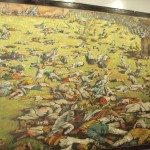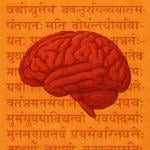I had made a post on Zoroastrianism last week and how its principles seemed so similar to Vedic precepts.
Here is an incredible post that lists the similarities between Rig Veda and Avesta (the Holy book of Zoroastrians). Given that the Islam’s birth was based on destroying the idol worshippers, and persecution of Zoroastrians as my blog post says – it seems a good conjecture to say that Islam grew at the cost of Vedic people or the offshoots that formed various religions.
There are lot of familiar names in Avesta from the Rig-Veda and one of the first references comes not from India or Persia, but from northern Syria. A treaty signed by the Hittites and Mitannis dating to the fourteenth century BC calls upon Indara/Indra, Mitras(il)/Mitra, Nasatianna/Nasatya and Uruvanass(il)/Varuna, all known to Rig-Veda and Avesta.
There were similarities in rituals too. In India, upanayana is a ritual by which a boy becomes a full member of his class. Zoroastrians have a similar ceremony called Navjot which is still practiced by Parsis. The Rig-Veda refers to the drink soma which was drunk at sacrifices and which caused invigorating effects. The Avesta gives physical descriptions of the plant haoma which causes similar effects, though the plant identified as haoma by modern Parsis is a bitter herb which does not get your drunk, but just bitter.
Even though there are similar words like haoma (soma), daha(dasa), hepta (sapta), hindu (sindhu), and Ahura (Asura) in Avesta and Rig-Veda, there are reversals in religious concepts and attributes of Gods. Indra and the devas are demonic in Avesta, and Ahura/asura is considered the highest deity.
At the time of composition of the Vedas, Varuna was losing his importance to Indra. In Avesta, Ahura Mazda is the main divinity and some people think that he is the same as Varuna. Varuna sat with his spies who flew all around the world and bought back reports on the conduct of mortals. He abhorred sin and loathed evil deeds prompted by anger, drink and gambling.
Dates of Avesta and Rig Veda
The answer depends on whom you ask. According to Thapar, the date of Avesta has been controversial, but a mid-second millennium date is now being accepted. Thapar considers the the Hittite-Mittani treaty as more archaic than the Sanskrit of Rig-Veda and hence dates Rig-Veda to be of a date closer to the language and concept of Avesta.
Like the Rig-Veda, the texts of Avesta were collated over several hundred years and have been dated linguistically to around 1000 BCE. Avesta texts are thought to been transmitted orally for centuries before they were written down and so it is hard to put a date to it.
In their book In Search of the Cradle of Civilization Georg Fuerstein, Subhash Kak and David Frawley dismiss the dates suggested by Thapar, A. L. Basham and Max Muller. According to them, the Rig Veda mentions the river Saraswati which disappeared in 1900 BCE and so it has to be at least eight centuries older than the Max Muller’s arbitrary date of 1200 BC. Vedic literature is considered older than Avestan literature by 500 – 1000 years though the dating of both is speculative.
The Mittani Indo-Aryan language is considered older than Vedic or Avestan because it has aika instead of eka. Vedic is supposed to to have merged ai to e and hence is considered younger. But if you take the word for seven in Mittani – satta, it is considered to be much later than Vedic. So some folks believe that this dating based on selectively chosen words cannot be trusted fully.
If you look at the Avestan and Vedic language you see that ‘h’ in one language has been renamed as ‘s’ in another. There are people like Rajesh Kochchar and Romila Thapar who believe that the Vedic people migrated from the Haraxvati (Saraswati) region in Afghanistan and not the mythical Saraswati flowing underground through Rajasthan. It seems this replacing ‘s’ with ‘h’ is prevalent in some parts of Rajasthan and Assam even today. One point of view is that it is not possible to find which one came first based on language traits.
















